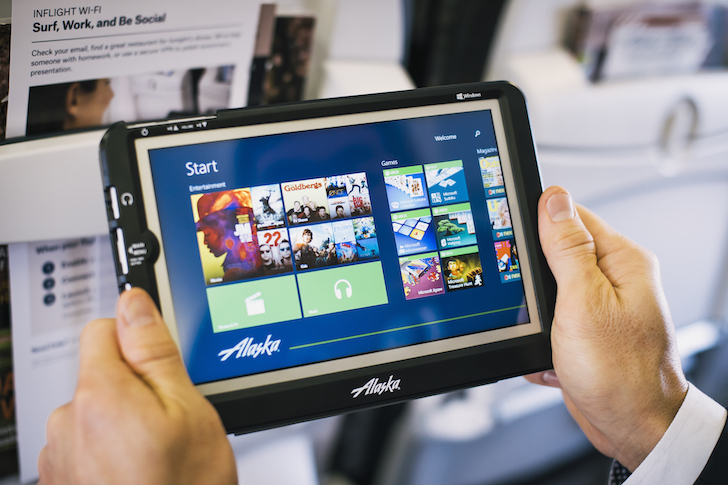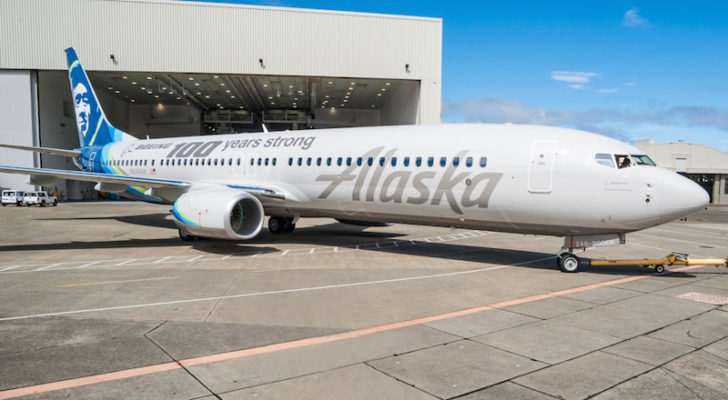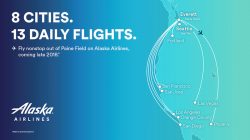It’s not surprising to anyone flying Alaska Airlines or Virgin America, but Dominic Gates at The Seattle Times has an interesting article that details some of the challenges since their merger. The general picture is one of a company that bit off more than it could chew. Time spent digesting Virgin America–including necessary labor negotiations–has made it difficult to stay nimble in its competition with Delta Air Lines.
I try to be an optimist. Negative stories get more readers, but it’s usually not as bad as they stay. Still, it’s hard to deny that things have been on a recent downhill trend at Alaska.

My wife was among those who suffered from the delays and cancellations this summer as Horizon Air faced staffing shortages. I faced delays of my own in San Francisco–but who doesn’t? And it does seem that recent contact with customer care has involved more time on hold. Alaska Airlines has been good about pre-emptive service recovery, such as discount codes that arrive shortly after or even before a flight when delays and aircraft swaps happen, but the fact these are necessary is still worrisome.
Labor disputes are not my forte. The employees I have spoken to, onboard and behind desks, seem upbeat while admitting that it is going to be a struggle. It certainly has not boiled down to the levels I’ve observed during other mergers. When United Airlines and Continental Airlines merged, I saw agents and flight attendants badmouthing each other and senior management. A first class upgrade was a great way for the airline’s most valuable customers to hear constant griping. If anything, Alaska’s staff seem to be taking a more passive aggressive approach. I laughed when I heard about pausing for a minute during taxiing. But hey, that’s typical for Seattle!
What I will say is that I think it’s unfair to make the comparison between the big three and Alaska. The route networks are different, and the destinations are different. Some things about flying for Alaska Airlines are undoubtably easier while others are harder. Maybe it balances out, but it’s the same job that an flight attendant or pilot at Delta, United, or American will experience. It just means that after an independent evaluation you might end up at the same place. Despite the anecdotes in the article, I still think the customer service at Alaska is outstanding and continues to be one reason I fly with them.
It’s also one of their biggest vulnerabilities. I’ve long said that an airline can survive if it excels on the quality of its airline or the quality of its loyalty program. One can make up for deficiencies in the other. Delta SkyMiles earned the “SkyPesos” moniker years ago, and American AAdvantage is following in their footsteps. But Delta still has a great airline. I haven’t heard as many positive things about American lately.

United and Alaska are probably more similar in that they score average or above average in both areas even if they don’t stand out as excellent. United had some troubles immediately after its merger but is in recovery. MileagePlus still has value, even if not as much. It’s an airline I still enjoy flying. They have an extensive international network and are investing (albeit slowly) in making their experience worldclass.
Alaska has never had a network as large as United’s or the others’, and for that reason it has never had the reason to invest in things like lie-flat seats or a huge lounge network. The decision to rely on mobile devices rather than built-in seatback entertainment was ridiculed in the past but now looks prescient as more airlines consider taking them out. I think it was just about staying economical.


Alaska Airlines has historically done very well working within the constraints of their market. And with a good loyalty program and an excellent network on the west coast, I’ve been glad to give them the majority of my business. Alaska has never faced such huge growth before. On top of that there is relentless competition from Delta. Frankly, it would be more surprising if everything were going swimmingly.
The issues cited in Gates’ article are exactly what I think management anticipated, but just because something is anticipated doesn’t mean you have resources to address all of them at once. If Alaska needs to hand out fewer cookies so it can set aside the funds for pilot raises, that seems like a good priority. The risk is that the little things add up to create a more general sense of sacrifice and decay. But we’re not there yet. “Cookiegate” is just a catchy name that gets people to read past the first page.
What could Alaska Airlines do? I’m not in charge, but I have a few ideas.
First, make the loyalty program less generous. I don’t mean to gut it and make it like all the others, but it is far more generous now than it needs to be. I have a ticket booked on Emirates that will earn me over 100,000 award miles after all the different bonuses are stacked on. That’s ridiculous. Unique perks like free changes on revenue tickets can be eye-catching, and they keep people invested in the program. But marginal investments like issuing more award miles will ultimately face diminishing returns.
The loyalty program matters. I’m just saying it matters less than other parts of running an airline. Cost savings can be funneled into improving the staffing at call centers, offering better food and beverage on board, and keeping employees happy. I may not care about the cookie, but someone does! These positive experiences will have a more salient impact on customers than what happens three months later when they try to redeem their miles.
Second, think about how to improve the first class product on longer flights. Alaska has made great improvements in its economy class cabin with new baggage bins and power outlets, free streaming content, and extra legroom. But the front cabin needs help. Lie-flat seats on premier routes were not an issue in the past because Seattle is such as small market. Unfortunately Delta is an international carrier that can more quickly swap aircraft.

You might point to JetBlue and its Mint cabin, claiming that small size is no excuse, but they are based in New York where the economics are different. I don’t think Alaska could have done something like Mint if it only had Seattle, Portland, and Anchorage. Expanding in Los Angeles and San Francisco will give it a better opportunity. There are already reports of a new Alaska Lounge coming to JFK, which would be a perfect excuse for launching a lie-flat seat on certain transcon flights.
Finally, don’t be afraid to stay different. I like that the food is local (although there are signs this is ending), the call centers are casual with first names, and they still have an Eskimo on the tail. The average person cannot tell the difference between Delta, United, and American–three anonymous corporations that “compete” with fortress hubs, carving out their own pieces of the country not unlike cable monopolies.

Alaska can either pursue a different customer segment that appreciates those things, as I do, or it can go after the same segment as the big carriers and find a different, more successful pitch. One approach it’s taken is offering multiple flights to different airports in a market, like San Jose, Oakland, and San Francisco, rather than just one. Fewer flights, but always the one you want. Simply copying competitors like Delta will never work, because that road leads to price wars that it will surely lose as the smaller player.




